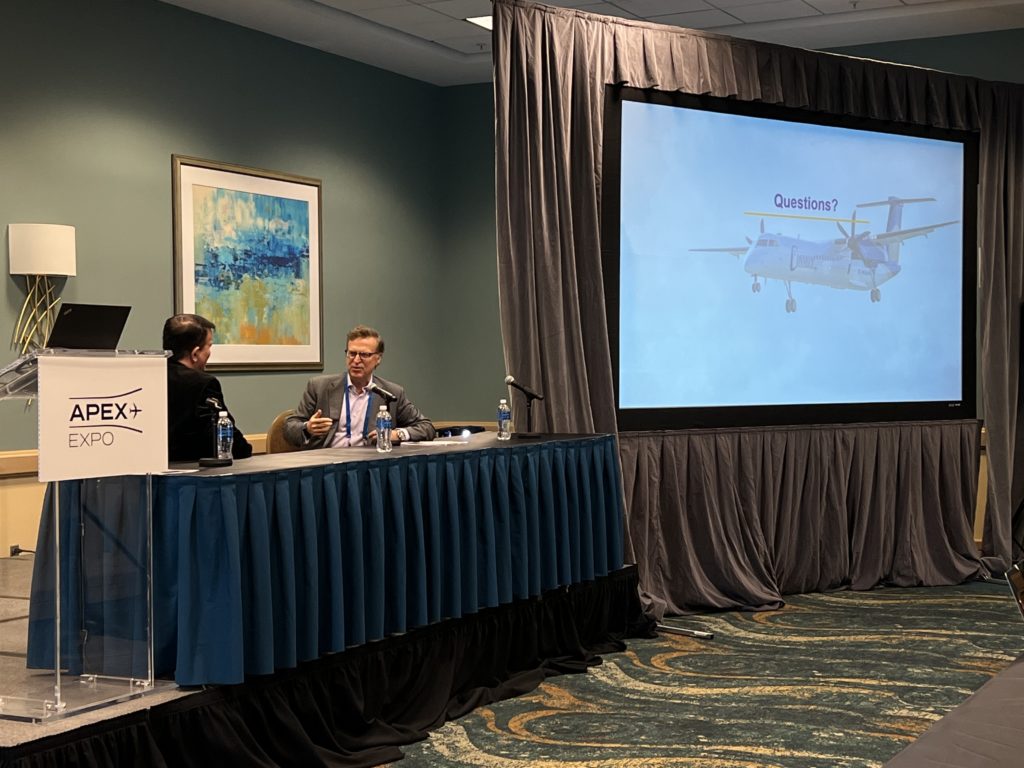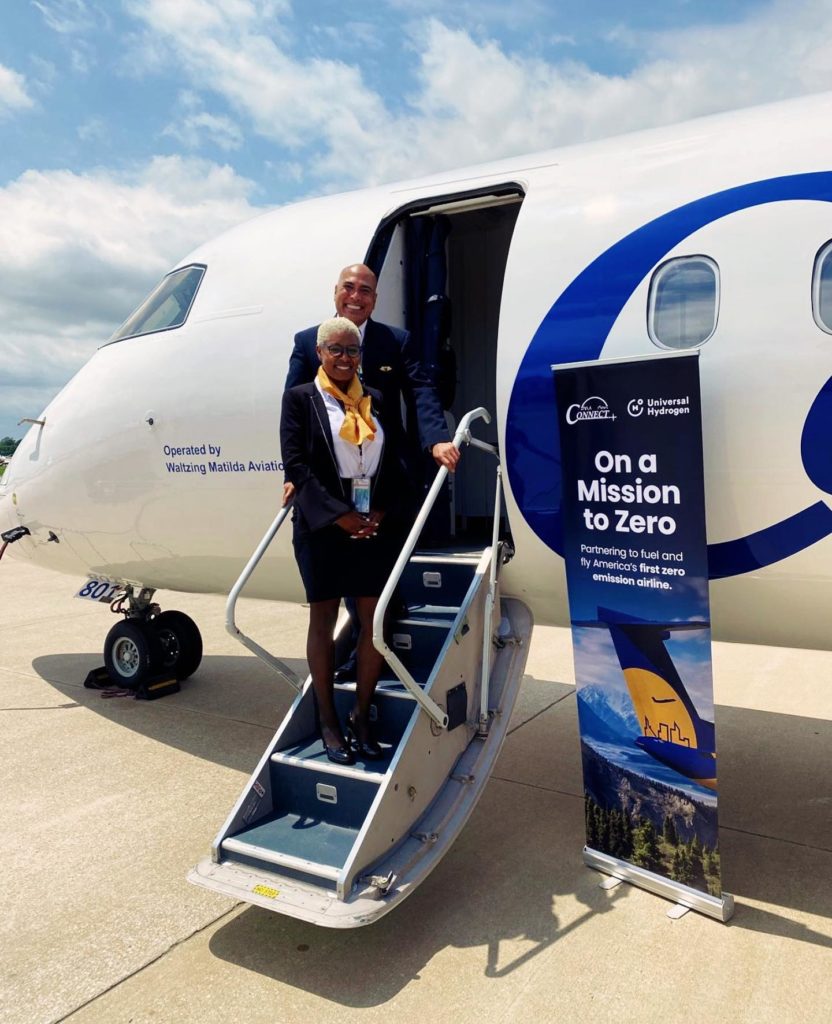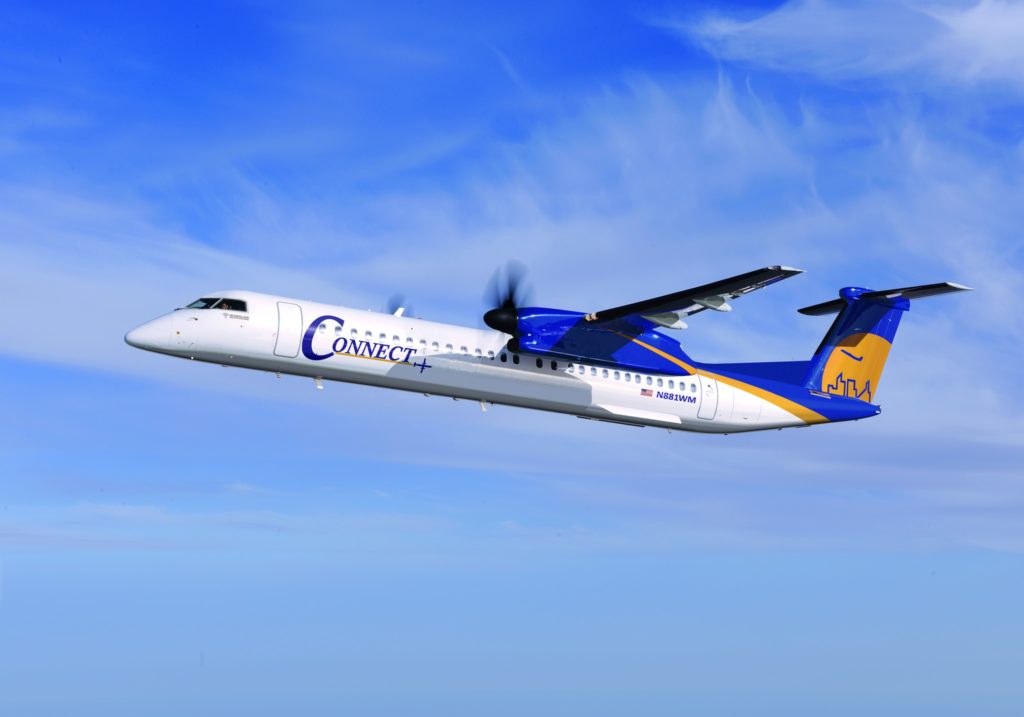Connect Airlines CEO John Thomas on Connect’s pursuit of a “smarter way to fly”
Share
Closing out the Thought Leadership Breakout Sessions on the final day of the APEX/IFSA EXPO in Long Beach, Connect Airlines CEO, John Thomas, joined APEX CEO Dr. Joe Leader to talk about Connect Airlines unique approach to sustainability
Connect Airlines CEO John Thomas is an industry veteran who has worked for major airlines around the globe on some of their most important issues, including mergers and acquisitions, alliances, ancillary revenues, product development and loyalty programs.

During his tenure at Virgin Australia, Thomas launched the carrier’s hugely-successful Economy X product and onboard Wi-Fi. Thomas also founded Waltzing Matilda Aviation (WMA) as a corporate jet operator in 2008, and transitioned WMA into a commercial operation in 2015.
But as Thomas joked with APEX CEO Dr. Joe Leader as he took the mic, when he flies with his wife in the states, he’s mostly known as the “bag man.”
“So, I’ll get it out in the open right now. They do say ‘ancillary revenues,’ but I’m actually regarded as the bag man,” joked Thomas. “Because, as my wife likes to remind everyone when we’re taking flights in the states, I was the one who introduced bag fees to the US market. Anyway, I’m here to talk about Connect Airlines and the whole raison d’être of Connect Airlines is to bring sustainability to the global aviation industry.”
Noting the “phenomenal progress” that has been made by Airbus in terms of engine technology and improved air traffic management, Thomas said the real problem is the next step.

“And the next step is really the era of zero-emission narrowbody aircraft, which obviously requires a direct hydrogen powered aircraft, and it’s unlikely that that aircraft will be available until 2035. So that leaves us with about a 13-year gap. And given the growth that’s going on in the industry that has recovered from COVID and will continue to grow quite strongly, that is a gap that we really can’t stop still and wait out,” explained Thomas.
“As Paul Eremenko, the co-founder and CEO of Universal Hydrogen says, if you just look at the growth of the airline industry, there’s absolutely no way that we’re going to make the 2050 zero-emission targets unless, during the 2020s, we convert the entire regional fleet to zero emissions.”
And while some have questioned the wisdom of focusing on the smaller regional market straight out of the gate, Thomas suggests that the regional market is exactly where we should begin.
“Interestingly enough, if you just take the US – and I think that these numbers would be very similar for Europe – in 2019, the size of the US domestic market was about 926 million passengers, of which about 165 million, and I think we’ve lowballed that a bit, I think the number is actually closer to about 210 million, but around 165 million of those passengers took a flight of less than 450 miles,” noted Thomas.
“So that’s just under 20% of the industry are enplanements on flights of 450 miles. And the time difference between being on a jet and being on a turboprop on anything less than 450 miles is de minimis, there really isn’t much time difference between the two. So, from a customer value proposition, if they can get to where they’re going just as [quickly] on something that is more ecologically-friendly then why wouldn’t they?”

And if those same 165 million passengers flew on turboprop Q400 aircrafts – which is what Connect is hoping to begin flying from Toronto’s Billy Bishop Toronto City Airport to Philadelphia in January of 2023 – Thomas noted that carriers would save roughly 6 billion pounds of CO2 emissions.
“Of course, we don’t expect passengers will flock to us simply because we’re environmentally better. We’ve also got to do things differently,” said Thomas, adding that offering more comfortable seats, enhanced amenities, and an all-around better travel experience, with green benefits, is just the beginning.
“Next we have to build scale, so people will know that we are more than just one airline flying into one city. Our plan over the next three to four years is to build to 100 Q400’s in key US East Coast hubs.” And though Thomas admitted that the timeframe sounds ambitious, he was also quick to point out that, when it comes to sustainability, time is definitely of the essence.
“My 25 year-old son is an environmental consultant,” Thomas shared exclusively with APEX Media while rushing to catch a car to the airport after his session. “He started a plastic bag ban in our town when he was a junior in high school, so, younger business people, this next generation coming up, they are all very conscious of this stuff. That’s part of the reason why Google started putting the emission levels on their Google Flights search page as well,” added Thomas.
“Because people, younger passengers in particular, want to have control over what they are doing and how and where they spend their money. That’s your future traveler and it’s happening today.”


